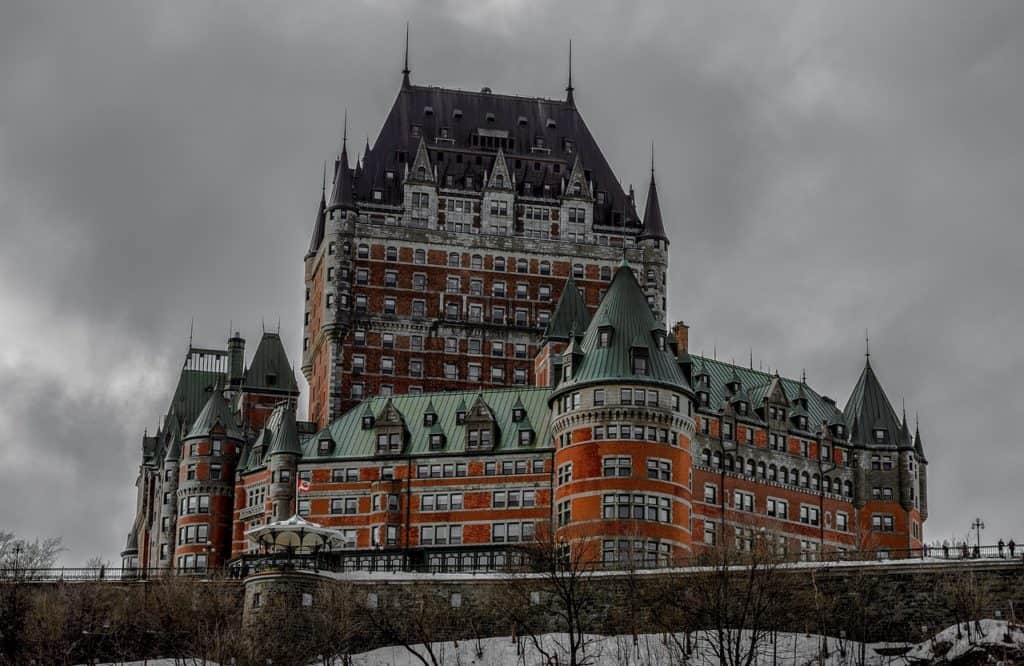
By clicking on either buttons, you are agreeing to our TOS and disclaimers and will be redirected to an affiliate cord blood banking provider. We might get financial compensation if you sign up with them through our affiliate links. Unlock your special discounts by adding your promo code.
CORD300 in the coupon field to get $300 OFF cord blood and tissue banking. OR cord200 to get $200 OFF if you are getting cord blood banking only.
GET YOUR FREE CONSULTATION! CALL NOW 581-221-6476

CORD BLOOD BANKING IN QUEBEC CITY, QUEBEC
What is Cord Blood banking in Quebec city, Quebec?
Cord blood and tissue banking in Quebec city, Quebec is a procedure that has been gaining increased attention in the medical world for its potential to help treat a range of diseases and medical conditions.
In simple terms, cord blood banking involves collecting and storing stem cells from a newborn’s umbilical cord. These stem cells are rich in potential and can be used to help treat a range of illnesses, including certain cancers, blood disorders, and genetic diseases. As a result, many expectant parents are now considering cord blood banking as a way to secure their child’s health for the future.
The process of banking umbilical cord blood involves collecting the blood immediately after birth and sending it to a specialized facility for processing and storage.
The cost of storage can vary depending on the service provider and the length of storage time chosen. There are many factors to consider when deciding whether to bank cord blood, including family medical history and the potential future use of the stem cells.
What is cord and tissue banking in Quebec city, Quebec?
Cord tissue banking involves the collection and storage of the cord tissue, which is the gel-like material that surrounds the blood vessels in the umbilical cord. This tissue is rich in stem cells, which are the building blocks of the body’s immune and blood systems. The stem cells found in cord tissue are different from those found in cord blood, making it a valuable resource for future treatments.
Umbilical cord blood and tissue collection in Quebec city, Quebec?
Umbilical cord blood and tissue are collected immediately after birth via a non-invasive and pain-free procedure.
The umbilical cord is clamped and cut as usual, but instead of discarding the placenta and umbilical cord, they are collected by a trained healthcare professional.
The blood is extracted from the cord using a sterile needle and collected into a specialized bag with anticoagulants to prevent clotting. The tissue is collected by cutting a small piece of the cord and placing it into a sterile container.
Both cord blood and tissue are then transported to a laboratory for processing and storage.
This procedure is a safe and effective way to collect valuable stem cells that can be used for future medical treatment


Umbilical cord blood and tissue storage near Quebec city, Quebec
Umbilical cord blood and tissue are valuable sources of stem cells, which have the potential to treat a wide range of diseases.
To ensure the preservation of these stem cells, they are collected at the time of birth and stored in specialized facilities.
The most common method of storage is cryopreservation, where the stem cells are slowly frozen and stored in liquid nitrogen at -196°C.
This ensures that the stem cells can be retrieved and used for medical purposes for many years to come. Additionally, many cord blood banks also offer the option to store the umbilical cord tissue, which contains a different type of stem cell that can also be used for medical treatments.
Overall, proper storage of umbilical cord blood and tissue is crucial for their potential use in future medical treatments.
Quebec city, Quebec, Canada
Nestled in the heart of French Canada, Quebec City is a historical gem rich in culture and charm. The city boasts a unique blend of old-world European style architecture and modern Canadian influences, making it a top destination for tourists from around the world.
Quebec City is the capital of the province of Quebec, and an important cultural and economic hub for Canada. The city is home to over 500,000 residents, making it the second-largest French-speaking city in the world after Paris. The city’s rich history is reflected in its many museums, galleries, and cultural institutions, making it a destination for history buffs, art lovers, and cultural enthusiasts alike.
Visitors to Quebec City will be greeted with cobblestone streets, towering cathedrals, and charming cafes and restaurants serving up traditional Quebecois cuisine. From the picturesque Old Quebec district to the iconic Chateau Frontenac hotel, there are endless sights to explore in
1. History of Quebec City’s founding
Quebec City, the capital of the Canadian province of Quebec, is a city rich in history and culture. Its founding dates back to 1608 when French explorer Samuel de Champlain established a fur trading post on the site. However, the area was already inhabited by the Indigenous peoples of the region, notably the Huron-Wendat, the Algonquin, and the Innu. The French settlement was named “Kebec,” an Algonquin word which means “where the river narrows.” Over the years, the city grew and became an important center for trade and commerce, as well as a stronghold for the French Empire in North America. Today, Quebec City is recognized as a UNESCO World Heritage site and a popular tourist destination, attracting millions of visitors each year who come to explore its rich history and experience its unique joie de vivre.
2. Cultural diversity of the city
Quebec City, Quebec is a vibrant and diverse city that takes pride in its unique culture and history. One of the most notable aspects of the city is its rich cultural diversity. Quebec City is home to a diverse population of people from many different backgrounds, including Indigenous peoples, French Canadians, English Canadians, and immigrants from all over the world. This cultural diversity is reflected in the city’s food, music, art, and architecture. Visitors to Quebec City are likely to encounter a variety of different cultural experiences, from traditional Indigenous crafts and cuisine to modern art installations and festivals celebrating the city’s multicultural heritage. The cultural diversity of Quebec City is a source of pride for its residents and an important aspect of the city’s identity.
3. Tourist attractions in the city
The city of Quebec, located in Quebec, Canada, is renowned for its rich history and vibrant culture. Visitors to this beautiful city are treated to an array of tourist attractions that showcase its unique heritage and natural beauty. Here are three of the top tourist attractions in Quebec City.
1. Old Quebec: The historic district of Old Quebec is a UNESCO World Heritage Site and a must-visit for anyone traveling to Quebec City. Here, visitors can stroll along cobblestone streets, explore the many museums and galleries, and take in the stunning architecture of the city’s many historic buildings.
2. Montmorency Falls Park: Just a short drive from Quebec City, Montmorency Falls Park is a natural wonder that attracts thousands of visitors each year. The park features a stunning waterfall that is higher than Niagara Falls, as well as hiking trails, a suspended bridge, and a cable car for those who prefer a more leisurely way to take in the view.
3. Musée national des beaux-arts du Québec: Art lovers will enjoy a visit to the Musée national des beaux-arts du Québec, which houses one of the most extensive collections of contemporary and modern art in Canada. The museum features works by local and international artists, as
4. The unique architecture of Quebec City
Quebec City is known for its unique architecture that reflects a blend of European and North American styles. Founded in 1608, this historical city has witnessed a rich and diverse history that has left its mark on its built environment. The fortifications surrounding the old town date back to the 17th century and are the only remaining fortified walls in North America. The architecture of Quebec City is characterized by its stone buildings with steep roofs, dormer windows, and ornate facades. The most iconic buildings in the city are the Château Frontenac, the Parliament building, and the Notre-Dame de Québec Basilica-Cathedral. The Old Quebec district is a UNESCO World Heritage site and is considered one of the best-preserved examples of a fortified colonial city. The unique architecture of Quebec City is a testament to its rich history and cultural heritage, and is a major attraction for tourists from around the world.
5. Best time to visit Quebec City
Quebec City is a charming destination that attracts visitors all year round. However, there are certain periods of the year when the city is at its best. The best time to visit Quebec City is during the months of June to September when the weather is mild and pleasant, and the city is bustling with a variety of festivals and events. This is also the peak tourist season, so you can expect crowds and higher prices. The fall months of October and November are also great times to visit, especially if you’re interested in seeing the beautiful fall foliage and enjoying the cooler temperatures. Winter in Quebec City can be quite cold, but it’s also a magical time to visit and experience the city’s winter carnival and holiday festivities. Spring is the off-season in Quebec City, but it’s still a lovely time to visit for those who prefer quieter surroundings and lower prices. Ultimately, the best time to visit Quebec City will depend on your preferences, budget, and travel plans.
6. The local cuisine and restaurants
Quebec City, Quebec is a destination that offers a rich culinary experience. The local cuisine and restaurants are an integral part of the city’s culture and history. The city’s cuisine is a blend of French and Canadian influences, producing a unique and delicious cuisine that is sure to satisfy any palate. Visitors to the city can indulge in traditional dishes such as poutine, tourtiere, and maple syrup, as well as modern twists on classic dishes. The city is also known for its vibrant restaurant scene, with a wide range of establishments catering to all tastes and budgets. From fine dining to casual bistros, visitors are sure to find a restaurant that suits their preferences. Many of the city’s restaurants also showcase local ingredients, including seafood from the nearby St. Lawrence River and produce from Quebec’s fertile farmlands. Overall, the local cuisine and restaurants in Quebec City offer a delightful culinary experience that is not to be missed.
7. Outdoor activities in the city
Quebec City, Quebec is a vibrant urban center that offers a wide variety of outdoor activities for locals and visitors alike. From hiking and biking to kayaking and rock climbing, there are plenty of ways to enjoy the great outdoors while still being in the heart of the city. For those who enjoy hiking, the Plains of Abraham offer a scenic and historical route through the city’s most famous battlefield. For a more challenging hike, the Laurentian Mountains offer a variety of trails and breathtaking views of the city and surrounding areas. Cyclists can take advantage of the city’s bike-friendly infrastructure by renting a bike or joining a guided tour. For water activities, the St. Lawrence River offers kayaking and paddleboarding, while indoor climbing centers provide a challenging workout for those seeking an adrenaline rush. Overall, Quebec City offers numerous options for outdoor enthusiasts looking to explore the city while staying active.
8. The City’s festivals and events
Quebec City is a vibrant metropolis that is home to a variety of festivals and events throughout the year. From music festivals to cultural events, there is always something happening in the city that is sure to appeal to visitors of all ages. One of the most notable festivals is the Quebec Winter Carnival, which takes place in February and features ice sculptures, parades, and other winter-themed activities. The summer months bring the Quebec City Summer Festival, a 10-day event that celebrates music and the arts with performances by local and international artists. Other popular events include the Festival d’été de Québec, which features over 300 musical acts, and the Festival de cinéma de la ville de Québec, which showcases the best in French language cinema. With so many events to choose from, Quebec City is truly a must-visit destination for anyone looking for a unique and exciting cultural experience.
9. Public transportation in Quebec City
Quebec City has an extensive public transportation system that provides residents and visitors with convenient and affordable travel options throughout the city. The Réseau de transport de la Capitale (RTC) operates a network of buses that covers the entire city, with frequent service and multiple routes to transport passengers to their desired destinations. The buses are modern, comfortable, and equipped with features such as air conditioning, wheelchair accessibility, and bike racks. The RTC also offers a variety of fare options, including single rides, day passes, and monthly passes, to accommodate the needs of all travelers. Additionally, the RTC has implemented various measures to ensure the safety of passengers during the ongoing COVID-19 pandemic, such as mandatory mask-wearing and increased sanitation practices. Overall, the public transportation system in Quebec City is an efficient and environmentally friendly way to get around and explore all that the city has to offer.
10. umbilical cord blood and tissue in Quebec city Quebec
Quebec City, Quebec is home to several healthcare facilities that provide umbilical cord blood and tissue banking services. These services involve the collection, processing, and storage of stem cells found in a baby’s umbilical cord blood and tissue. The stem cells found in umbilical cord blood and tissue are unique in that they have the potential to develop into various types of cells in the body, making them valuable for medical research and treatment purposes. By banking these stem cells, families can potentially use them in the future to treat certain illnesses and diseases. In Quebec City, Quebec, there are several private companies and public institutions that offer these services, providing families with the opportunity to bank their child’s umbilical cord blood and tissue for potential future use.
In conclusion, Quebec City is a must-visit destination for anyone looking to experience the rich history and culture of Canada. With its stunning architecture, vibrant arts scene, and world-class cuisine, Quebec City has plenty to offer visitors year-round. Whether you’re interested in exploring the city’s historic sites, taking in a show, or simply strolling along the picturesque streets, Quebec City is sure to leave an impression. As a professional travel destination, Quebec City is top-notch and is deserving of its reputation as one of the most charming and beautiful cities in North America.
GET YOUR FREE CONSULTATION! CALL NOW 581-221-6476
GET YOUR FREE CONSULTATION! CALL NOW 581-221-6476
GET YOUR FREE CONSULTATION! CALL NOW 581-221-6476
Table of Contents
Toggle
